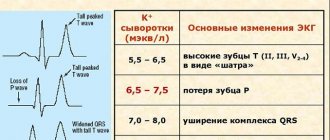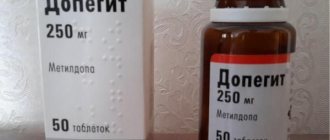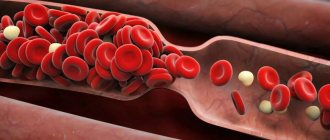Treatment for arterial hypertension can be extremely varied. Much depends on parallel pathologies, the financial capabilities of the patient, and the beliefs of the doctor himself. But combination drugs for hypertension lie at the very basis of therapy and in its basic principles.
One of the most important goals in treating hypertension is achieving blood pressure goals. The patient's blood pressure should drop below 140/90 mm. rt. Art. But that is not all. It is necessary to achieve not only a reduction, but also constant maintenance of blood pressure at this level. Sudden changes in pressure can provoke a hypertensive crisis, cause heart pain, weakness and general deterioration of the condition.
In connection with the peculiarities of selecting therapy for arterial hypertension, it is necessary to take into account that the prescription of antihypertensive drugs should only be carried out by a doctor, and in no case by neighbors or acquaintances. The variety of pathologies that, in parallel with hypertension, affect the patient’s well-being and cause differences in the course of the disease, requires careful individual selection of treatment.
Combination drugs for hypertension versus monotherapy
Combined drugs have existed since ancient times and were constantly used in ancient practices. But medicine goes its own way. Since the beginning of the 20th century, therapy for arterial hypertension began with monotherapy. Monotherapy is the treatment of a specific pathology with one active substance. It has been customary to recommend one drug depending on the origin of hypertension and its degree. If the doctor failed to achieve the target numbers, the dose of the medication was increased. And only if such an increase in dose did not help reduce the pressure to the desired level, the doctor added another antihypertensive drug.
This therapy to reduce blood pressure was relevant until the beginning of the 21st century. Although it is worth noting that fixed combination drugs for hypertension appeared much earlier, namely in the 50-60s. 20th century. The concept of a fixed combination means the presence of two or more active ingredients under one shell. While combination therapy, in principle, can be carried out with different drugs simply prescribed together.
Very often, with monotherapy, it was impossible to achieve target pressure values, and a second drug had to be prescribed anyway. But time might already be lost. As a result, the disease progressed in patients. In addition, prescribing maximum dosages at the initial stage often provoked the appearance of a large number of side effects.
A list of studies in 95-98, aimed at assessing the effectiveness of monotherapy, proved that therapy with one drug leads to a slight decrease in systolic pressure (on average by 10 - 12 mm Hg) in contrast to combination therapy, which on average helps to reduce systolic pressure by 20-25 mm Hg. The effect of combination therapy on organ protection was also significantly higher than that of monotherapy. When evaluating the treatment of patients with elevated diastolic blood pressure, the effect of combination therapy and monotherapy on the risk of heart attack was also assessed. The risk of heart attack was lower in the combination therapy group. This is written in detail in the results of the NOT study.
Analysis of the results of these research studies marked the end of the era of monotherapy. According to the latest European recommendations of 2020, treatment for arterial hypertension must initially be started with combination therapy. This will allow you to quickly achieve target numbers, increase organ protection and reduce the possibility of side effects.
The place of combination antihypertensive therapy in modern treatment of arterial hypertension
Zh. D. KobalavaRussian Peoples' Friendship University
CLINICAL PHARMACOLOGY AND THERAPY, 2001, 10 (3)
IT IS WELL KNOWN that normalization of blood pressure in arterial hypertension is achieved very rarely. The best figures achieved in the USA and France are 27 and 33% respectively. In most other regions the figure fluctuates between 5-10%. Back in 1989, data from the Glasgow Blood Pressure Clinic study confirmed the dominant role of treatment-induced blood pressure levels in the prognosis of arterial hypertension (AH) and clearly demonstrated high rates of cardiovascular mortality and morbidity with insufficient blood pressure reduction.
These provisions were later confirmed in the HOT study. A combined regimen of antihypertensive drugs as a tool for normalizing high blood pressure has always been present in the pharmacotherapeutic arsenal of hypertension. However, views on the place of combination therapy in the treatment of hypertension have been repeatedly revised.
The first fixed combinations of antihypertensive drugs (reserpine hydralazine hydrochlorothiazide; alpha-methyldopa hydrochlorothiazide; hydrochlorothiazide potassium-sparing diuretics) appeared in the early 60s. In the 70s and 80s, the leading place was taken by combinations of a diuretic, usually in a high dose, with beta-blockers or centrally acting drugs.
However, soon, due to the emergence of new classes of drugs, the popularity of combination therapy decreased significantly. It was replaced by the tactics of differentiated selection of drugs using them in maximum doses in the Monotherapy mode. Monotherapy with high doses of antihypertensive drugs often led to the activation of counter-regulatory mechanisms that increase blood pressure and/or the development of adverse events.
In this regard, it is not surprising that in the next decade, hopes for higher antihypertensive activity of angiotensin-converting enzyme (ACE) inhibitors and calcium antagonists did not materialize, and the pendulum of attitudes towards combination therapy returned to its original position, i.e. it was recognized as necessary for most patients with hypertension.
A new round in the evolution of this approach is associated with the advent of fixed low-dose combinations of antihypertensive drugs in the late 90s. These were combinations that did not contain a diuretic (calcium antagonist, ACE inhibitor; dihydropyridine calcium antagonist, beta-blocker) or containing it in low doses.
Already in 1997, the list of antihypertensive drugs in the report of the US Joint National Committee (VI) included 29 fixed combinations. The feasibility of low-dose combination rational antihypertensive therapy, especially in patients at high risk of developing cardiovascular complications, was confirmed in the latest WHO/International Society of Arterial Hypertension (1999) and DAG-1 (2000) recommendations.
Thus, in the history of combination antihypertensive therapy, the following stages can be distinguished: I - the use of combinations containing rauwolfia derivatives and/or components in high doses; II - the use of combinations of diuretics in high or medium doses with beta-blockers, potassium-sparing diuretics, ACE inhibitors and III - the predominant use of fixed combinations without diuretics (beta-blocker dihydropyridine calcium antagonist; calcium antagonist ACE inhibitor) or containing diuretics in low doses (hydrochlorothiazide 6.25-12.5 mg; indapamide 0.625 mg)
Significant variability in the antihypertensive effect of different drugs has been repeatedly confirmed in cross-sectional and longitudinal clinical studies. However, the search for reliable criteria for individual drug selection has been unsuccessful.
At the same time, the effectiveness of monotherapy with antihypertensive drugs of different classes is generally comparable: 40-50% of patients respond to treatment. A return to combination therapy is often associated with the results of the HOT mega-study, which confirmed the necessity of achieving a target blood pressure level to truly reduce cardiovascular risk.
To solve this problem, combination therapy was required in 2/3 patients. Similar data were obtained from a retrospective analysis of most cited studies on hypertension (Fig. 1). The lower the required target pressure level (for example, in patients with diabetes mellitus and renal failure), the more drugs the patient requires.
Thus, the relevance of combination antihypertensive therapy can be justified by the following provisions: the influence of drugs of various classes on different physiological systems involved in the regulation of blood pressure, and a proven increase in the number of patients responding to treatment, up to 70-80%; neutralization of counterregulatory mechanisms aimed at increasing blood pressure; reducing the number of required visits; the possibility of faster normalization of blood pressure without increasing the frequency of adverse events (often it decreases); frequent need for rapid and well-tolerated reduction in blood pressure and/or achievement of low target blood pressure values in high-risk groups; possibility of expanding indications for prescription.
Rational combination therapy must meet a number of mandatory conditions: safety and effectiveness of the components; the contribution of each of them to the expected result; different but complementary mechanisms of action; higher efficiency compared to that of Monotherapy with each component; balance of components in terms of bioavailability and duration of action; strengthening organoprotective properties; impact on the universal (most common) mechanisms of blood pressure increase; reducing the number of adverse events and improving tolerability. In table
TABLE 1. Adverse effects of antihypertensive drugs and possibilities for their elimination
Basic principles of combination therapy
Rational combination of drugs for hypertension involves prescribing drugs with different mechanisms of action and with different spectrum of influence on tolerability. Drugs must have not only different mechanisms of action, but also different points of application.
For example, there are two groups of antihypertensive drugs: ACE inhibitors (angiotensin-converting enzyme inhibitors) and ARBs (angiotensin II receptor blockers, otherwise called sartans). They seem to have different mechanisms of action. ACEIs block angiotensin-converting enzyme, preventing angiotensin-I from converting to the form of angiotensin-II, which has strong vasoconstrictor properties. While sartans block receptors sensitive to angiotensin-II, preventing it from manifesting its hypertensive properties. The mechanisms are different, but the point of application is the same. In this regard, combinations of sartans with ACE inhibitors are not rational.
Combination medications for hypertension also help mitigate possible side effects. They try to combine them in such a way as to compensate for each other’s side effects. For example, amlodipine sometimes causes swelling of the legs. This occurs because calcium channel blockers cause only the arterioles (small capillary arteries) to dilate, while the venules that carry blood to the extremities remain narrowed. As a result, plasma sweats through the walls of blood vessels and causes plasma edema of the extremities, which cannot be corrected with diuretics. But simultaneous administration of an ACE inhibitor with amlodipine leads to the expansion of venules. As a result, blood flows freely from the extremities and plasma does not leak out. No swelling occurs.
Thus, the simultaneous administration of two antihypertensive drugs helps reduce the number of side effects and improve the patient’s quality of life.
Groups of drugs for the treatment of hypertension
There are a huge number of trade names among antihypertensive drugs, which are neither necessary nor possible to list. In the context of this publication, it is appropriate to highlight the main classes of drugs and briefly characterize them.
Group 1 – angiotensin-converting enzyme inhibitors. The ACEI group is represented by such drugs as Enalapril, Captopril, Lisinopril, Perindopril, Ramipril, Quinapril. These are the main drugs for the treatment of hypertension, which have the ability to slow down the development of myocardial fibrosis and delay the onset of heart failure, atrial fibrillation, and renal failure.
Group 2 – angiotensin receptor blockers. The drugs of this group are similar in effectiveness to ACE inhibitors, since they exploit the same angiotensinogen mechanism. However, ARBs are not enzyme blockers, but rather inactivators of the angiotensin receptor. They are somewhat inferior in effectiveness to ACE inhibitors, but also slow down the development of CHF and chronic renal failure. This group includes the following drugs: Losartan, Valsartan, Candesartan, Telmisartan.
Group 3 – diuretics (loop and thiazide). "Hypothiazide", "Indapophone" and "Chlorthalidone" are relatively weak thiazide diuretics, convenient for continuous use. Loop diuretics "Furosemide" and "Torasemide" are well suited for stopping crises, although they can also be prescribed on an ongoing basis, especially in cases of already developed congestive CHF. Among diuretics, their ability to increase the effectiveness of ARBs and ACEIs is of particular value. Antihypertensive therapy during pregnancy involves the use of diuretics as a last resort, when other drugs are ineffective, due to their ability to reduce placental blood flow, while in other patients this is the main (and almost always mandatory) drug for the treatment of hypertension.
Group 4 - adrenergic blockers: Metoprolol, Bisoprolol, Carvedilol, Propranolol. The latter drug is suitable for relieving crises due to its relatively rapid action and effect on alpha receptors. The remaining drugs on this list help control blood pressure, but are not the main ones in the antihypertensive regimen. Doctors value their proven ability to increase the life expectancy of patients with heart failure when taken simultaneously with ACE inhibitors and diuretics.
Group 5 - calcium channel blockers: Amlodipine, Lercanidipine, Nifedipine, Diltiazem. This group of drugs is widely used in the treatment of hypertension because it can be taken by pregnant patients. Amlodipine has a beneficial effect of nephroprotection, which, together with the use of ACE inhibitors (or ARBs) and diuretics, slows the development of chronic renal failure in malignant hypertension in non-pregnant patients.
Group 6 – other medicines. Here it is necessary to indicate heterogeneous drugs that have found use as antihypertensives and have heterogeneous mechanisms of action. These are Moxonidine, Clonidine, Urapidil, Methyldopa and others. A complete list of medications is always present to the doctor and does not require memorization. It is much more beneficial if each patient remembers well his antihypertensive regimen and those drugs that were successfully or unsuccessfully used previously.
Benefits of Combination Therapy
1) Combination drugs for hypertension help influence different levels of the pathological process. Sometimes, it is precisely this property of combination therapy that helps to simultaneously influence risk factors and comorbidities, which improves the quality of therapy.
2) Such therapy helps to correct adverse side effects.
3) Combination drugs for hypertension act at different points of application. This helps them act faster and more efficiently, and achieve a significant reduction in blood pressure numbers.
4) Reducing the dose of both drugs helps minimize side effects. This is due to the fact that low doses of several active substances are often used in combination therapy. This helps reduce the possibility of adverse events. This occurs because refusal of treatment when side effects occur is sometimes a fundamental factor in the selection of therapy.
Perhaps these are not always global phenomena, for example bronchospasm or the development of metabolic syndrome. These can be seemingly minor side effects, which sometimes greatly affect the patient’s quality of life and his individual perception of the disease. An example could be increased vellus hair growth in women or nighttime diuresis. Thus, low doses help to avoid significant manifestations of undesirable reactions of the body to antihypertensive therapy.
5) Greater antihypertensive effectiveness, especially in patients with concomitant pathology. For example, patients with metabolic syndrome and hypertension are very often resistant to antihypertensive drugs. Combination therapy makes selection easier, ensuring greater effectiveness of therapy.
6) The ability to individualize therapy due to a large number of groups of antihypertensive drugs. For example, take the same IPAF and sartans. The doctor prescribed the patient a combination of ACEI and amlodipine. The patient tolerates amlodipine well, but while taking an ACE inhibitor, a prolonged cough developed, which disappeared after discontinuation of the drug. The doctor concludes that the ACE inhibitor has developed a side effect in the form of cough. And in the end, without any problems, he replaces the combination of ACEI with amlodipine with the combination of sartan and amlodipine.
Fixed combinations
The main disadvantage of combination therapy without the use of fixed combinations is the so-called polypharmacy effect. This is a condition in which the patient is forced to take a large number of pills at the same time, which gradually tires him out. As a result, the patient decides to independently refuse some of the prescribed medications. This is, of course, a big problem in modern medical practice. The way out of this is to switch to fixed combinations. Fixed combination drugs for hypertension help to significantly reduce polypharmacy, reduce the financial costs of the patient and help him avoid the need to take pills by the handful.
The first appearance of fixed combinations in modern medicine occurred in the 50-60s of the 20th century. Subsequently, a combination of reserpine with hydrochlorothiazide was released for the treatment of hypertension (there is now a similar drug on the pharmaceutical market, Adelfan-Ezidrex). This combination has long been very popular due to its powerful effects. But a large number of side effects and the need for repeated doses gradually replaced it from the leading position.
Medicine does not stand still. There are now several classes of antihypertensive drugs. In particular, these are beta blockers, calcium channel blockers, ACE inhibitors, ARBs. New generation combination drugs for hypertension are constantly emerging. The combination of different classes has led to a huge variety of combination antihypertensive drugs on the pharmaceutical market.
Rationality of combinations of antihypertensive drugs
In the process of studying the properties of antihypertensive drugs, their compatibility with each other, that is, the degree of their rationality, was determined.
There are irrational combinations, possible and rational combinations of antihypertensive drugs. Irrational combinations include the following:
Irrational combinations:
- a combination of drugs of the same class, but having different active ingredients;
- beta blocker plus a centrally acting drug;
- beta blocker plus non-hydropyridine calcium antagonist;
- ACE inhibitor and potassium-sparing diuretic;
- ACE inhibitor and ARB*.
*a combination of drugs of these classes doubles the risk of developing hyperkalemia and renal failure.
Possible combinations:
- Dihydropyridine and non-hydropyridine calcium antagonist
- ACE inhibitor and beta blocker;
- ARB and beta blocker;
- ACE inhibitor and angiotensin receptor blocker;
- alpha-blockers with ACE inhibitors, angiotensin receptor blockers, calcium antagonists and diuretics.
Rational combinations:
Rational combinations - these include all modern combination drugs that are presented on the pharmaceutical market.
- ACE inhibitor plus diuretic (Noliprel A forte);
- ARB plus diuretic (Valsacor);
- ACE inhibitor plus calcium antagonist (Egypres);
- ARB plus calcium antagonist (Twynsta);
- beta blocker plus dihydropyridine calcium antagonist (Concor AM);
- calcium antagonist plus diuretic (Arifam);
- beta blocker plus diuretic (Lodoz, Nebilong-N);
- beta blocker plus alpha blocker.
A large selection of combination drugs for hypertension allows the doctor to select the optimal medicine for the patient, which will help not only reduce blood pressure to target values, but also protect target organs (heart, kidneys, blood vessels and organs of vision).
Very often, the use of fixed combinations helps to reduce the cost of therapy, which is important in today’s difficult conditions.
In addition, fixed combinations increase adherence to therapy. Taking one tablet for blood pressure in the morning and forgetting about the problem until tomorrow is much easier than taking two or three tablets three times a day.
A guarantee of constant monitoring can only be taking medications daily, even if you feel excellent and have normal blood pressure.
Review Reviews
You can make your own rating of pills for hypertension based on reviews from patients communicating on numerous medical forums. Patients' opinions quite often coincide with doctors' reviews about the treatment of hypertension. Of course, reviews should not be used as a guide when choosing which blood pressure pills are good, since what is good for one person may not be suitable for another body at all. Therefore, the review of opinions about medicines is for informational purposes and not a recommendation.
Based on the reviews, the drug rating is as follows:
- Physiotens (Moxonidine) is called the best, but also the most expensive drug for blood pressure;
- those suffering from bronchial asthma call sartan Valsacor the drug of choice for the treatment of hypertension;
- elderly patients give good ratings to the drug Prestarium (ACEI);
- women suffering from dizziness praise Betalok ZOK;
- patients who have survived a pre-infarction state say that they are supported by the tablets Vamloset (a combination drug) and Veroshpiron (the active ingredient is the diuretic Spironolactone);
- people who have been taking antihypertensive drugs for years (more than 10 years) believe that Lisinopril is the best for them;
- those suffering from atrial fibrillation and pressure surges are successfully treated with Bisoprolol.
As you can see, there are many variations in the course of hypertension described even in reviews, so you should choose your best medicine strictly individually.
Combination drugs for hypertension depending on the pathology
Depending on the concomitant disease, the doctor selects the optimal combination of medications. The prescription depends on the patient’s risk level, the diseases he has, and the degree of damage to target organs.
| combined groups of drugs | indications for use |
| ACE inhibitor and thiazide diuretic | Recommended more often in case of development of chronic heart failure. In situations where arterial hypertension is accompanied by kidney damage and the development of nephropathy. When combined with diabetes mellitus and/or metabolic syndrome. When the geometry of the heart changes and left ventricular hypertrophy develops. Possible use in cases of isolated systolic hypertension in elderly patients |
| ACE inhibitor plus calcium antagonist | Recommended for angina pectoris. Also in case of development of left ventricular hypertrophy. With progressive atherosclerosis, including atherosclerosis of large vessels. In cases where hypertension is accompanied by comorbidity, namely the parallel development of diabetes mellitus and metabolic syndrome. In cases of isolated systolic hypertension in elderly patients. |
| ARB with added thiazide-like diuretic | This combination is often recommended for the development of chronic heart failure. In cases where hypertension is accompanied by kidney damage and the development of microalbuminuria. In case of development of myocardial hypertrophy. If the patient has a comorbid condition (diabetes mellitus or metabolic syndrome). In cases where the patient complains of cough while being treated with ACE inhibitors |
| ARB with added calcium antagonist | In case of development of coronary heart disease, myocardial hypertrophy. With progressive atherosclerosis, elevated cholesterol levels. With combined pathology (hypertension with diabetes mellitus or metabolic syndrome). In cases of cough during therapy with ACE inhibitors as an alternative. |
| Calcium antagonist plus thiazide diuretic | Most often, this combination is recommended for elderly patients in cases of isolated systolic hypertension. For coronary heart disease. For hypertension, which is accompanied by the development of chronic obstructive pulmonary disease |
| Calcium antagonist plus beta blocker | Recommended for angina pectoris. With progressive atherosclerosis. In case of development of heart rhythm disturbances. |
| Thiazide diuretic in combination with a beta blocker | Recommended in the post-infarction period. In case of cardiac arrhythmia, tachycardia, angina pectoris. |
Antihypertensive therapy: general rules
Both symptomatic hypertension and hypertension require correction with drugs that have a hypotensive effect. Antihypertensive therapy can be carried out with drugs that differ in their mechanism of action: antiadrenergic agents, vasodilators, calcium antagonists, angiotensin antagonists, and diuretics.
You can obtain information about the hypotensive effect of the drug and what medications to take for high blood pressure not only from your doctor, but also from your pharmacist.
Arterial hypertension is a chronic disease that requires constant drug support, daily monitoring and regular use of prescribed medications. Not only the state of health, but also the life of a person depends on compliance with these rules.
Despite the general availability of treatment rules for reducing blood pressure, many patients have to be reminded what a treatment regimen for hypertension should look like:
- Antihypertensive medications should be taken regularly, regardless of the patient’s well-being and blood pressure level. This allows you to increase the effectiveness of blood pressure control, as well as prevent cardiovascular complications and target organ damage;
- It is necessary to strictly adhere to the dosage and use the form of the drug prescribed by the attending physician. Independently changing the recommended dose or replacing the drug may distort the hypotensive effect;
- even if you are constantly taking antihypertensive drugs, it is necessary to systematically measure blood pressure, which will allow you to evaluate the effectiveness of therapy, timely identify certain changes and adjust treatment;
- in the case of an increase in blood pressure against the background of constant antihypertensive treatment - the development of an uncomplicated hypertensive crisis, an additional dose of a previously taken long-acting drug is not recommended. Blood pressure can be quickly reduced using short-acting antihypertensive drugs.
The use of combination drugs depending on the concomitant disease
Different classes of antihypertensive drugs act on specific parts of the chain that help control blood pressure in the body. In this regard, each class has its own pros and cons for certain problems associated with hypertension. New combination drugs for hypertension appear periodically. They are also recommended, taking into account all indications, contraindications and recommendations.
| concomitant pathology | recommended combinations | example of a trade name |
| Left ventricular hypertrophy | 1) ACE inhibitor + thiazide diuretic 2) ACE inhibitor + calcium antagonist 3) ARB + thiazide diuretic 4) ARB + calcium antagonist | 1) Noliprel A forte, Hartil D, Enzix, Enap-N, Berlipril 2) Prestans, Egipres, Equator, Dalneva 3) Lorista N, Telzap, Telsartan N, Valsacor, Co-Exforge 4) Twinsta, Telsartan AM, Atteno, Exforge , Vamloset, Lortenza |
| Asymptomatic atherosclerosis | 1) ARB with added calcium antagonist 2) ACE inhibitor with added calcium antagonist | 1) Twinsta, Telsartan AM, Atteno, Exforge, Vamloset, Lortenza 2) Prestans, Egipres, Equator, Dalneva |
| Microalbuminuria | 1) ACE inhibitor + thiazide diuretic 2) ARB + thiazide diuretic | 1) Noliprel A forte, Hartil D, Enzix, Enap-N, Berlipril 2) Lorista N, Telzap, Telsartan N, Valsacor, Co-Exforge |
| Antihypertensive therapy after a heart attack | 1) Beta blocker in combination with an ARB or ACE inhibitor 2) Beta blocker in combination with a calcium antagonist | 1) Prestilol, Logimax 2) Concor AM, Bisoprolol AML, Niperten Combi |
| IHD – coronary heart disease | 1) Beta blocker plus ACE inhibitor or ARB 2) Calcium antagonist plus ACE inhibitor 3) Calcium antagonist plus ARB | 1) Prestilol, Logimax 2) Twinsta, Telsartan AM, Atteno, Exforge, Vamloset, Lortenza 3) Prestans, Egipres, Equator, Dalneva |
| Chronic heart failure | Beta blocker plus ACE inhibitor and thiazide diuretic Beta blocker plus ARB and thiazide diuretic | There are no triple combinations, but you can combine a fixed combination of ACEI/ARB + thiazide diuretic and add a beta blocker. Example: Hartil -D plus Egilok |
| Chronic kidney disease | ARB or ACE inhibitor with added loop diuretic | No fixed combinations |
| Poor circulation in the lower extremities | ACE inhibitor with added calcium antagonist | Prestans, Aegipres, Equator, Dalneva |
| Elderly patient (over 65 years old) | 1) ACE inhibitor + thiazide diuretic 2) ACE inhibitor + calcium antagonist 3) ARB + thiazide diuretic 4) ARB + calcium antagonist | 1) Noliprel A forte, Hartil D, Enzix, Enap-N, Berlipril 2) Prestans, Egipres, Equator, Dalneva 3) Lorista N, Telzap, Telsartan N, Valsacor, Co-Exforge 4) Twinsta, Telsartan AM, Atteno, Exforge , Vamloset, Lortenza |
| Isolated systolic hypertension | 1) Calcium antagonist and thiazide diuretic 2) ACE inhibitor + thiazide diuretic 3) ACE inhibitor + calcium antagonist 4) ARB + thiazide diuretic 5) ARB + calcium antagonist | 1) Arifam 2) Noliprel A forte, Hartil D, Enzix, Enap-N, Berlipril 3) Prestans, Egipres, Equator, Dalneva 4) Lorista N, Telzap, Telsartan N, Valsacor, Co-Exforge 5) Twinsta, Telsartan AM, Atteno, Exforge, Vamloset, Lortenza |
| Metabolic syndrome | 1) ACE inhibitor + thiazide diuretic 2) ACE inhibitor + calcium antagonist 3) ARB + thiazide diuretic 4) ARB + calcium antagonist | 1) Noliprel A forte, Hartil D, Enzix, Enap-N, Berlipril 2) Prestans, Egipres, Equator, Dalneva 3) Lorista N, Telzap, Telsartan N, Valsacor, Co-Exforge 4) Twinsta, Telsartan AM, Atteno, Exforge , Vamloset, Lortenza |
| Diabetes | 1) ACE inhibitor + thiazide diuretic 2) ACE inhibitor + calcium antagonist 3) ARB + thiazide diuretic 4) ARB + calcium antagonist | 1) Noliprel A forte, Hartil D, Enzix, Enap-N, Berlipril 2) Prestans, Egipres, Equator, Dalneva 3) Lorista N, Telzap, Telsartan N, Valsacor, Co-Exforge 4) Twinsta, Telsartan AM, Atteno, Exforge , Vamloset, Lortenza |
| Pregnancy | Methyldopa can be combined with a calcium channel blocker or beta blocker |
Antihypertensive drugs: list of latest generation drugs
Drugs
Let's consider modern antihypertensive drugs of different pharmacological groups with rapid and prolonged action, their properties, side effects, and intercompatibility.
Classification of antihypertensive drugs
Medicines that correct blood pressure are divided into two large groups: first-line and second-line drugs. Moreover, they can be of rapid or prolonged action, belong to different pharmacological groups, that is, control different processes in the body.
First line
This is a large group of antihypertensive drugs, which are prescribed from the very beginning for the treatment of already confirmed hypertension, and includes 5 types of medications:
Group representativesPharmacological properties
| ACE inhibitors: Rasilez, Captopril, Enalapril, Cardosal, Lisinopril, Quinapril, Losartan, Nifedipine, Ramipril, Dapril | Medicines reduce peripheral resistance by expanding the lumen of blood vessels, which leads to a decrease in pressure without changing heart rate or cardiac output - this makes the drugs relevant for CHF. The effect begins after taking the first dose, and over time, a stable stabilization of blood pressure values occurs. Taking the latest generation of drugs improves the functioning of the kidneys and nervous system; the drugs show a minimum of side effects. |
Diuretics
| The drugs have different mechanisms of action and point of application, but all quickly remove excess water from the body along with sodium, relieving the heart and blood vessels. They change water-salt metabolism and metabolism. Contraindicated for gout, but are the drugs of choice for diabetes. |
| Angiotensin receptor blockers (ARBs): Valsartan, Telmisartan, Micardis, Irbesartan, Teveten Plus | The hypotensive effect is based on the ability of the drugs to disrupt the contact of angiotensin with the receptors of the cells of the internal organs, due to which the vascular wall relaxes, the pressure decreases, and the kidneys additionally stimulate the excretion of excess water and salts. Contraindicated for pregnant women and patients with individual intolerance to the components. They have virtually no complications. |
Adrenergic blockers
| They block adrenergic receptors, thereby reducing blood pressure, and at the same time slowing down the heart rate, therefore they are contraindicated for bradycardia. |
| Calcium antagonists: Amlodipine, Verapamil, Verapamil retard, Lercanidipine, Nifedipine retard, Felodipine, Diltiazem | They reduce the penetration of calcium ions into vascular muscle cells, thereby reducing their sensitivity to vasopressors and relieving vasospasm. Metabolic processes remain inert, while the level of left ventricular hypertrophy decreases, which reduces the risk of stroke. |
Second line
Antihypertensive drugs of this group are recommended for the relief of essential (primary) hypertension only in certain patients, for example, pregnant women, the elderly, and all those for whom expensive drugs are an unbearable burden for a long time. There are also 5 types of them:
Group representatives Mechanism of action
| Rauwolfia preparations: Raunatin, Rauvazan, Reserpine | They demonstrate a pronounced hypotensive effect and have a low cost. |
| Central α2 receptor agonists: Clonidine, Methyldopa, Moxonidine | They affect the central nervous system, reduce sympathetic hyperactivity, reducing blood pressure. Side effects include drowsiness and fatigue. |
| Direct-acting vasodilators: Nitroglycerin, Bendazole, Hydralazine, Nitrong, Milsidomin | Centrally acting drugs gently dilate blood vessels, reducing venous flow to the heart muscle, reducing oxygen deficiency in the myocardium, and increasing heart rate. They have many contraindications, so they are prescribed only by a doctor. |
| Antispasmodics: Dibazol, Euphylline, Theophylline | They act on the smooth muscles of blood vessels, reduce pressure, dilate them, reduce blood viscosity, and prevent thrombosis. |
| Combined: Tonorma, Ziak, Enap-N, Vazar-N, Kaptopress | They lower blood pressure in different ways, since they combine several antihypertensive drugs. |
Most often, these drugs are not recommended as independent therapy; they are an auxiliary arsenal that purposefully enhances the effect of the main drugs.
List of fast and long-acting drugs
The increase in pressure can be spontaneous, sudden or gradual, but steady. This requires the use of rapid or long-acting antihypertensive drugs.
Fast acting drugs:
- Lasix (Furosemide) is a loop diuretic, the drug of choice for emergency care, corrects electrolyte metabolism, causes frequent urination, tablets are effective within an hour, injectable within the first 20 minutes;
- Atenolol (Anaprilin, Sotagestal) - slows down the heart rate while leveling blood pressure, acts after 15 minutes;
- Adelfan - antihypertensive tablets under the tongue, effective in 10 minutes;
- Clonidine – the effect is observed after half an hour, minus – dryness of the mucous membranes;
- Nifedipine – begins to work 5 minutes after sublingual administration;
- Captopril - under the tongue, works in 20 minutes, minus - three times a day.
- Nitroglycerin has a hypotensive effect after 5 minutes, prevents vasospasm, leading to heart attacks.
These antihypertensive drugs are indicated for the relief of hypertensive crises. Complicated crises require injection therapy.
The prolonged group was developed for the convenience of treating hypertension; lifelong use of drugs once or twice a day does not interfere with leading a normal lifestyle:
- Sotalol, Propranol, Carvedilol - non-selective beta receptor blockers;
- Atenolol, Bisoprolol, Betaxol - selective beta blockers;
- Amlodipine, Verapamil, Diltiazem – calcium antagonists;
- Enalapril, Lisinopril, Perindopril – ACE inhibitors;
- Indapamide, Hydrochlorothiazide, Hypothiazide are diuretics.
These drugs are used in the combination treatment of second or third degree hypertension.
Valid combinations
The compatibility of antihypertensive drugs is necessary in the treatment of high blood pressure. The most commonly used combinations are presented in the table:
Combination of drugs Possible applications
| Beta blockers + diuretics | High blood pressure, uncomplicated hypertensive crisis, hypertension without target organ damage |
| Diuretics + ACE inhibitors | Hypertension resistant to therapy, chronic heart failure (CHF) |
| Diuretics + angiotensin 1 receptor blockers | Isolated systolic hypertension (ISAH), CHF |
| Diuretics + imidazoline II receptor agonists | If beta blockers are contraindicated, but there is a need to add similar agents to the diuretic |
| Diuretics + calcium antagonists | CHF with a sharp rise in pressure, in elderly patients with ISAH |
| Alpha and beta blockers together | Malignant hypertension |
| Beta blockers + ACE inhibitors | Post-infarction condition, secondary prevention, patients with coronary heart disease (CHD), CHF |
| Beta blockers + calcium antagonists | Arterial hypertension (AH), ischemic heart disease |
| Calcium antagonists + ACE inhibitors | Hypertension, nephropathy in the initial stage, ischemic heart disease, signs of atherosclerosis |
| Calcium antagonists + angiotensin 1 receptor blockers | High blood pressure, nephropathy, progressive atherosclerosis |
The effectiveness of any combination of antihypertensive drugs depends on the presence of certain indications, taking into account the metabolic and hemodynamic properties of each component.
Triple combinations
Triple combinations themselves are not uncommon in a doctor’s practice. When two drugs are ineffective, a third is added to them. This is the norm. Sometimes this is done to minimize side effects, sometimes to improve the patient's general condition. But if we talk about fixed triple combinations, they are still new to the doctor.
The advantages of triple combinations are undoubted - achieving target blood pressure values in a larger number of patients, reducing polypharmacy, and reducing the cost of therapy. But there are also some disadvantages. Namely, selecting a patient’s dose is quite problematic. In such cases, doctors often select the dosage of the active ingredients, and then transfer the patient to a fixed combination for ease of administration. This is quite difficult to do, since it is necessary to work closely and in detail with such patients. But in an outpatient setting in a regular clinic, when very little time is given for an appointment, this is quite difficult to do.
At the moment, several types of triple combinations are presented on the pharmaceutical market among drugs for lowering blood pressure. New generation combination drugs for hypertension list:
- ACE inhibitor + diuretic + calcium channel blocker, namely perindopril + indapamide + amlodipine (Triplexam, Co-Dalneva, Equapress)
- ARB + diuretic + calcium channel blocker, namely valsartan + hydrochlorothiazide + amlodipine (Co-Exforge, Co - Vamloset)
- calcium channel blocker + ACE inhibitor + statin, namely amlodipine + lisinopril + rosuvastatin (Equamer)
Fixed combinations already contain rationally selected active ingredients. This makes the doctor’s work and the patient’s life much easier. It is an effective tool for treating hypertension in most patients, helping to lower blood pressure, minimize side effects and prevent the development of cardiovascular complications.
But it must be remembered that self-prescription of drugs for hypertension is strictly not recommended! Taking such drugs is allowed only after consultation with a specialist!











